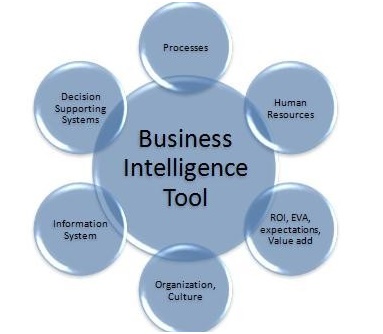The Importance of Business Intelligence

In a corporation, the set of tools or systems, which play a key role in the process of strategic planning, is called Business Intelligence (BI). Business Intelligence is a technology-driven process that can help business managers, corporate executives, and other end users in analyzing, organizing, and presenting useful information. It helps us to take more informed and organized business decisions. Organizations can collect data from external and internal system sources with the help of methodologies, applications, and a variety of Business Intelligence tools. Analytical results can be accessed by the operational workers and the corporate decision makers, because Business Intelligence involves analysis, data visualization, the creation of reports, dashboards, developing, and running of queries.
Gaining competitive advantages and standing a step forward than the business rivals; increasing operational efficiency; improving and accelerating decision making; internal business processes optimization; and driving new revenues comes from the potential benefits of Business Intelligence. Business problems in the industries can be spotted and solved; the BI systems can identify market trends.
Both the historical information and new data that are gathered from the heterogeneous source systems are included in BI data. The data is generated to support both the tactical and strategic processes of decision-making and is generated by BI analysis. Only IT professionals and the data analysts produced the reports using query results that ran the analysis for business users, using the Business Intelligence tools initially. Development of the data discovery tools and the self-service tools lead to the improvement of BI. Increasingly, Business Intelligence software is being used by both workers and the business executives themselves.
Business Intelligence is made up of a broad set of applications in data analysis, which includes operational BI, querying and ad hoc analysis, location intelligence, cloud, enterprise reporting, open source BI, online analytical processing (OLAP), mobile BI, collaborative BI¸ real-time BI, and software as a service BI.

For designing the info-graphics and the charts, data visualization software is used by BI technology. It also has tools, which build performance scorecards and BI dashboards. To make the key performance indicators easy to understand and to display visualized data on business metrics, Business Intelligence tools are used. You can buy BI applications from a single vendor as a unified BI platform or can be bought from different vendors separately.
Company’s information is stored into subsets such as smaller data marts or a data warehouse. They are typically used to store Business Intelligence data. As landing pads or repositories, BI architectures are highly using Hadoop systems additionally within the system. They are used especially for sensor data, log files, analytics data, other types of Big Data and it is especially for unstructured data.
From different sources, raw data must be gathered, integrated, cleansed, consolidated, and summarized before it is used in Business Intelligence applications. This process is done to ensure that the users are analyzing and accessing consistent and accurate information, using data quality and data integration tools.

















